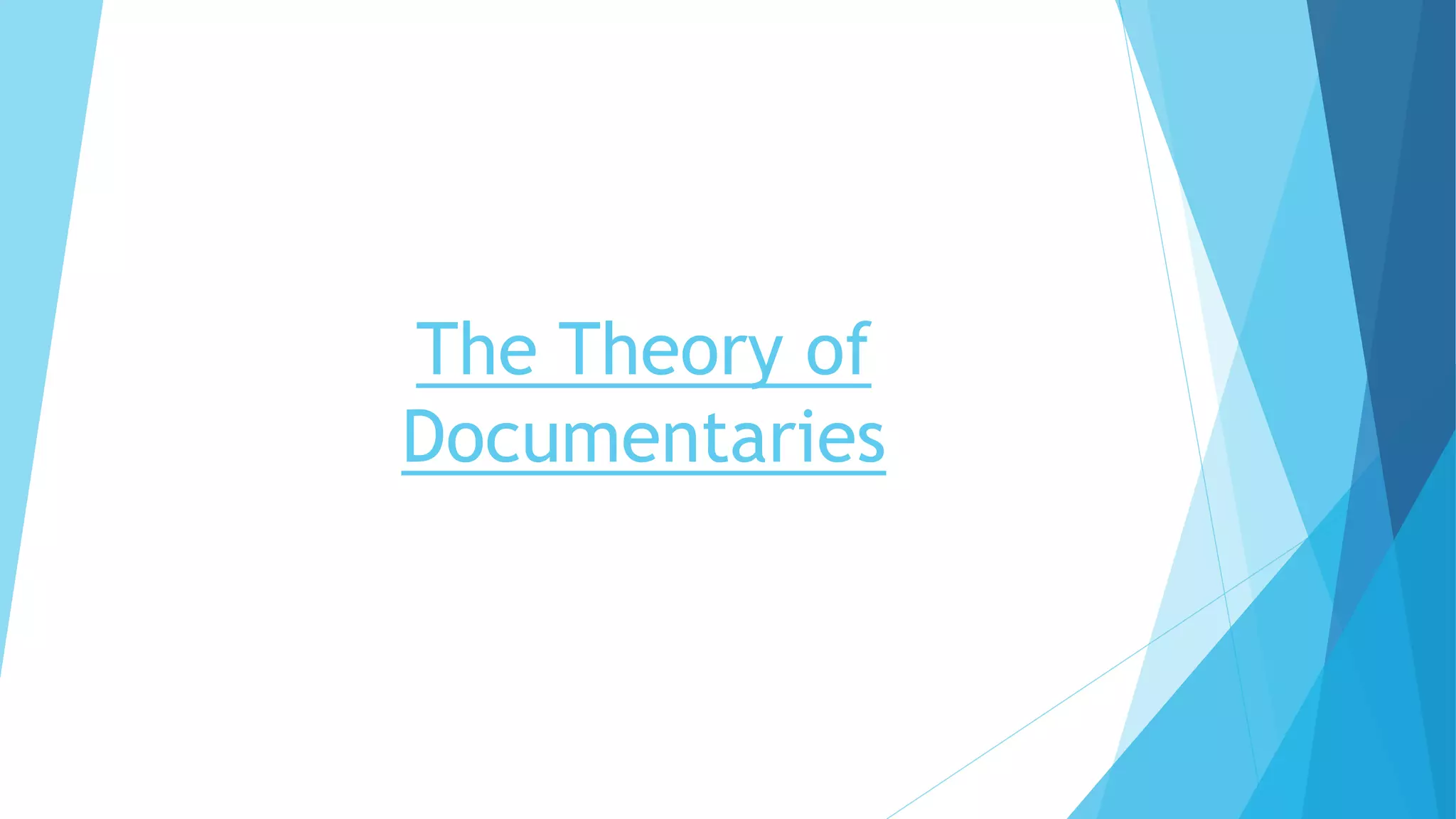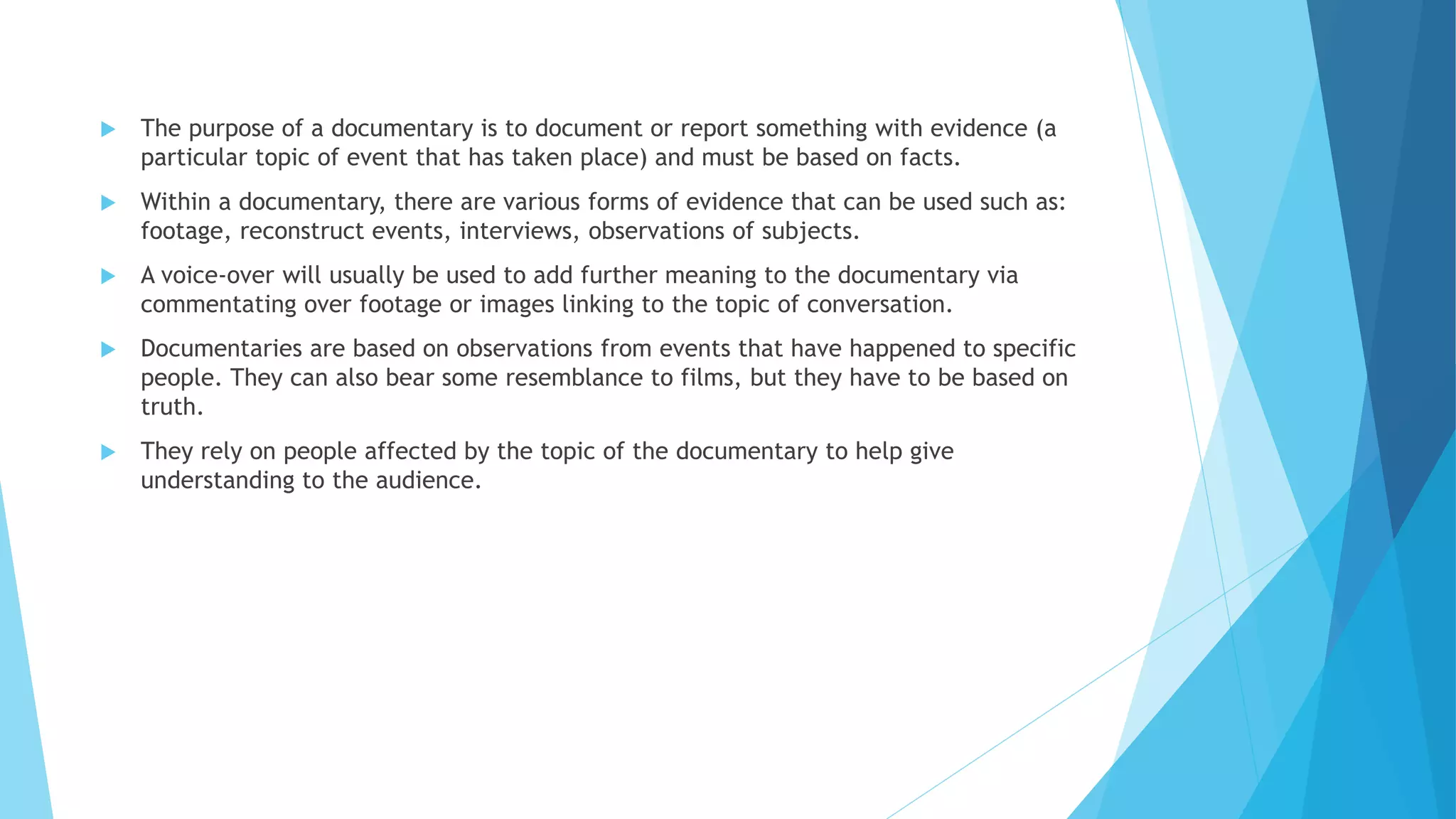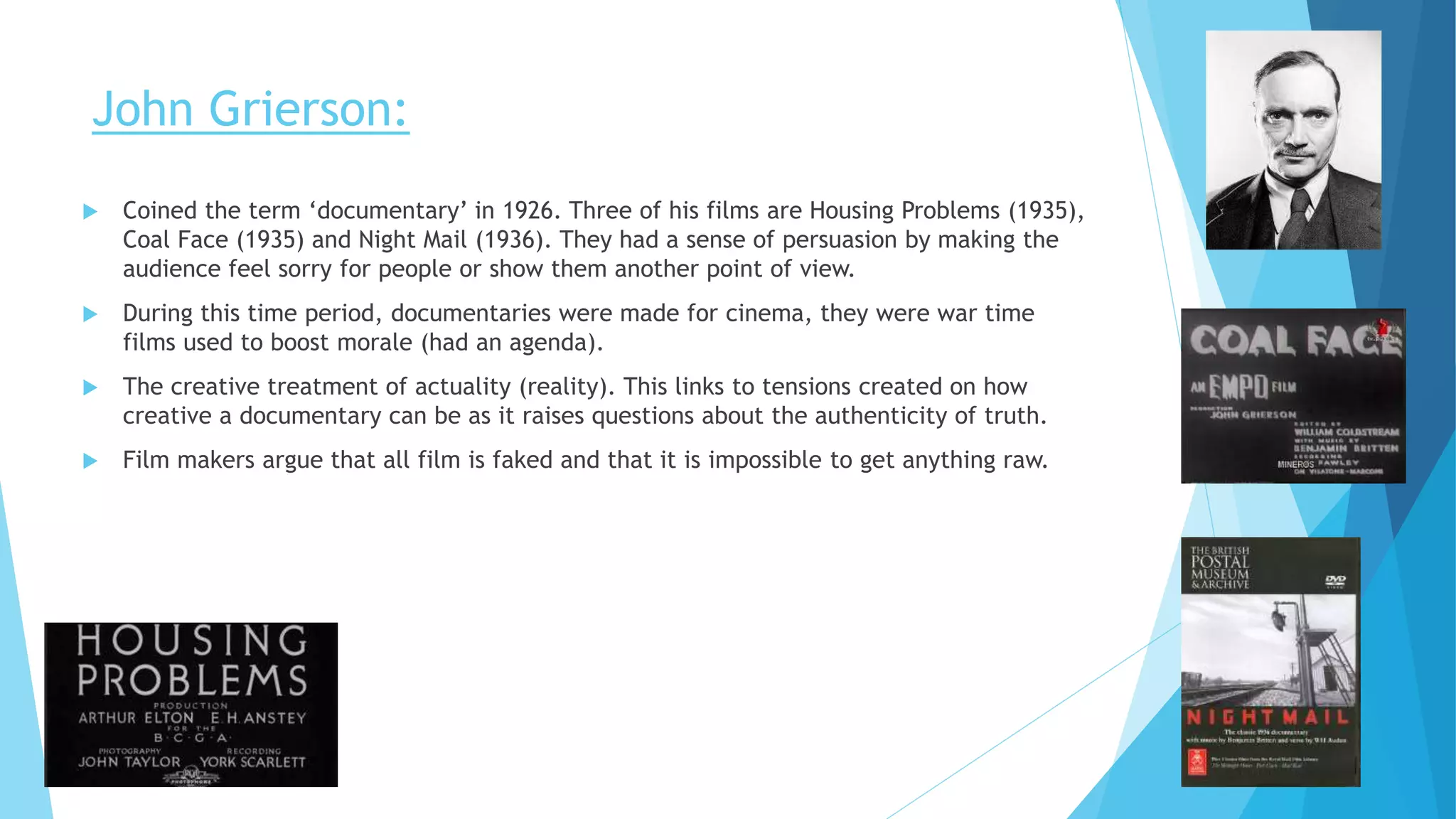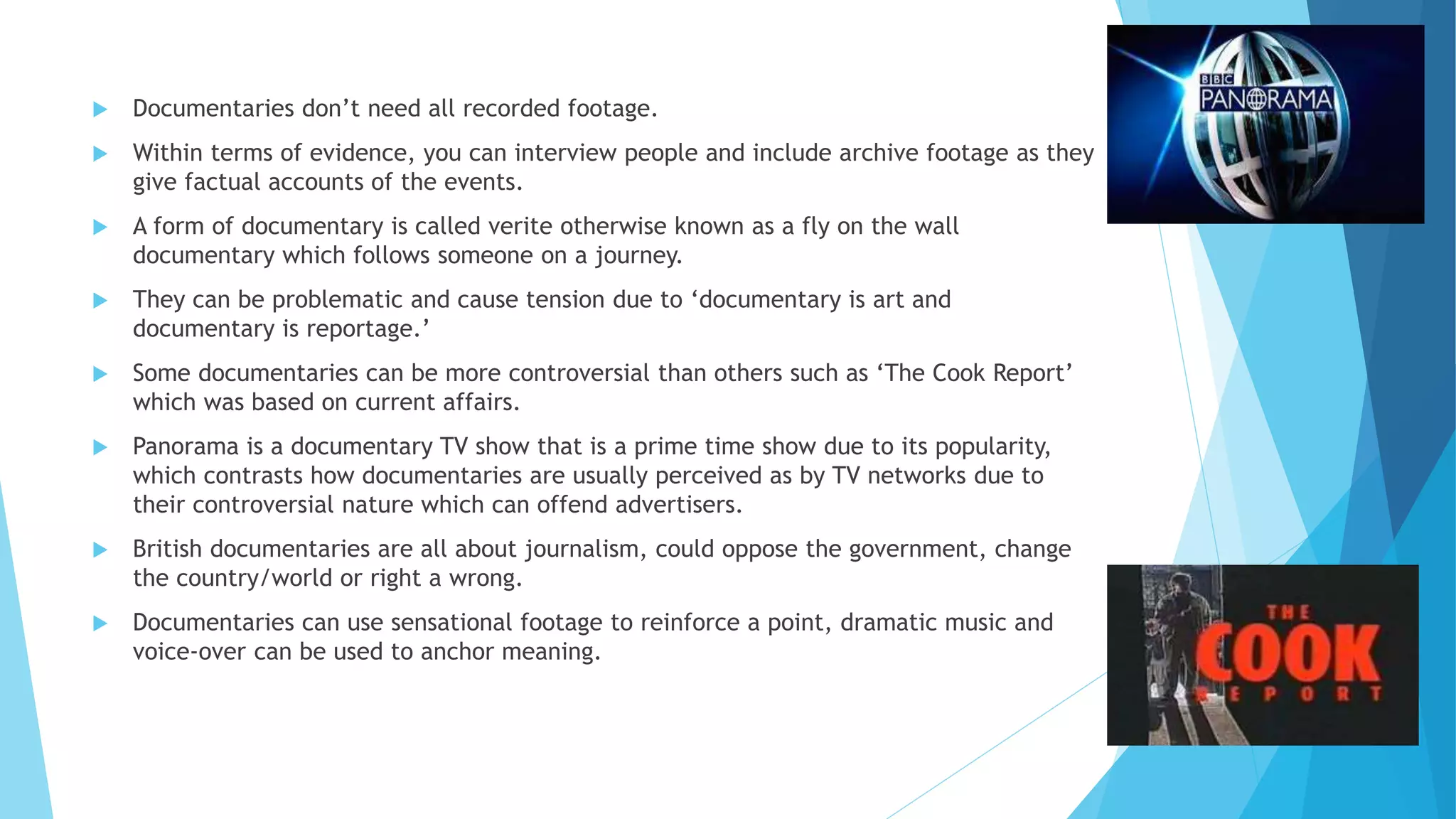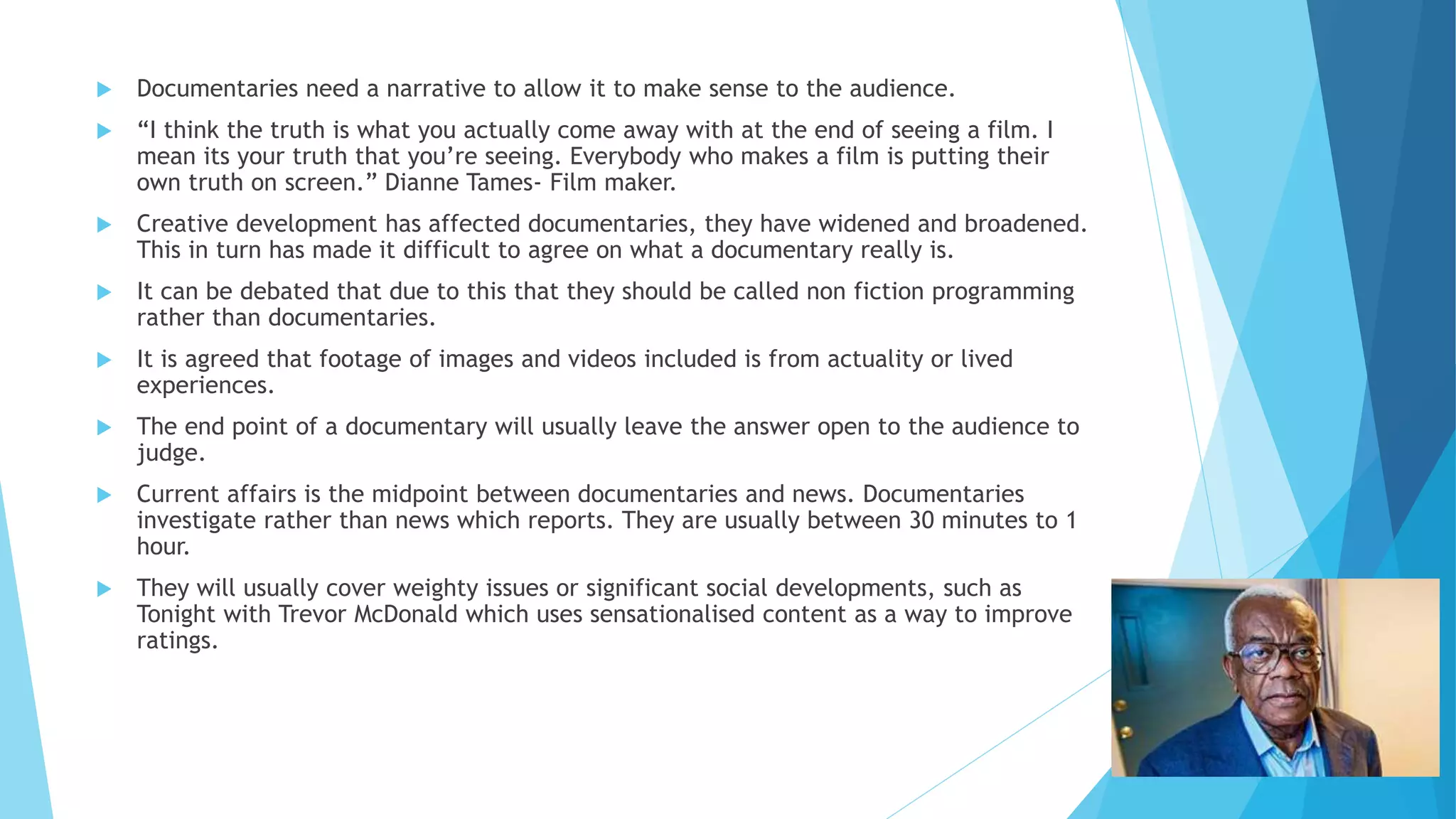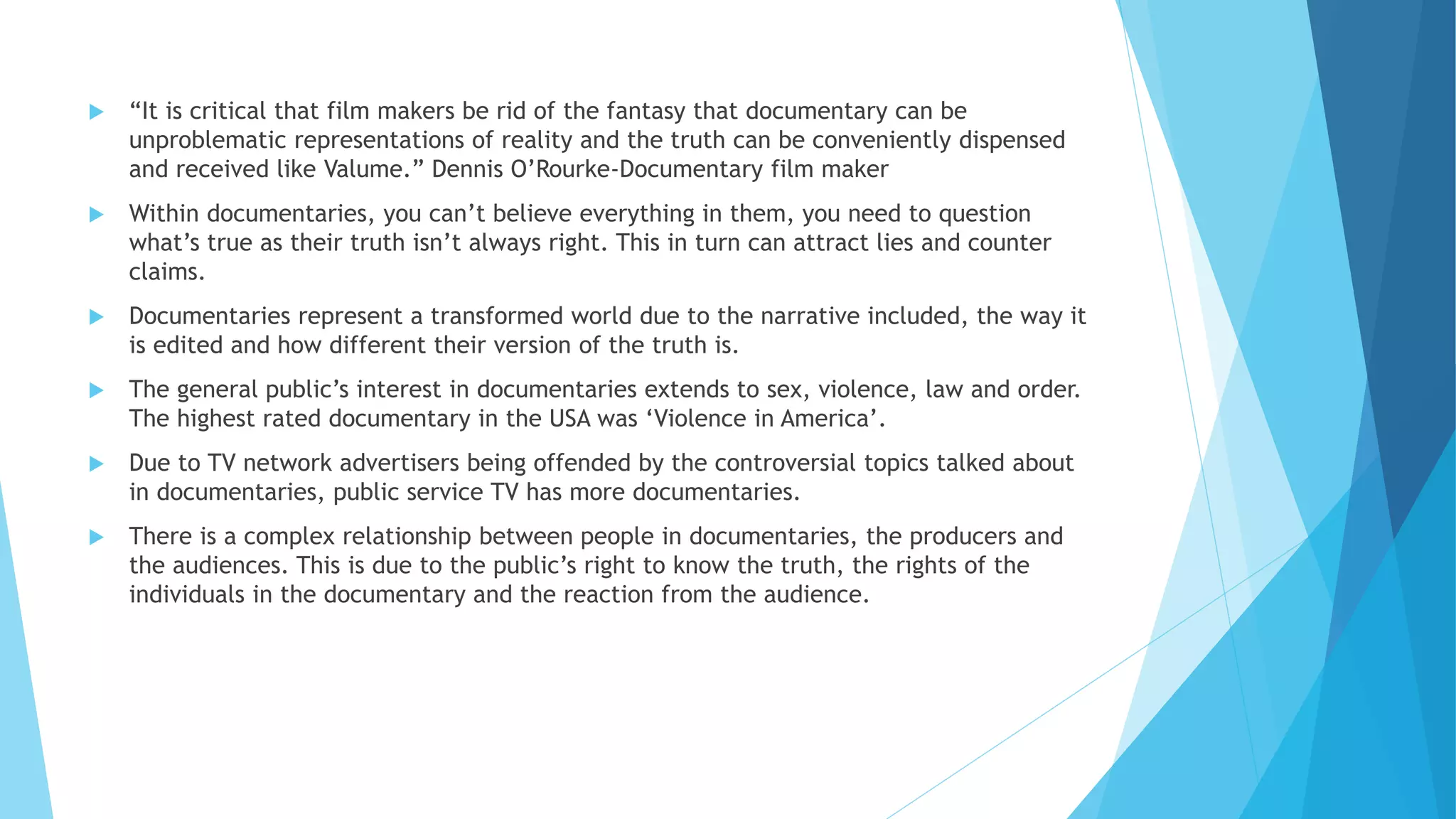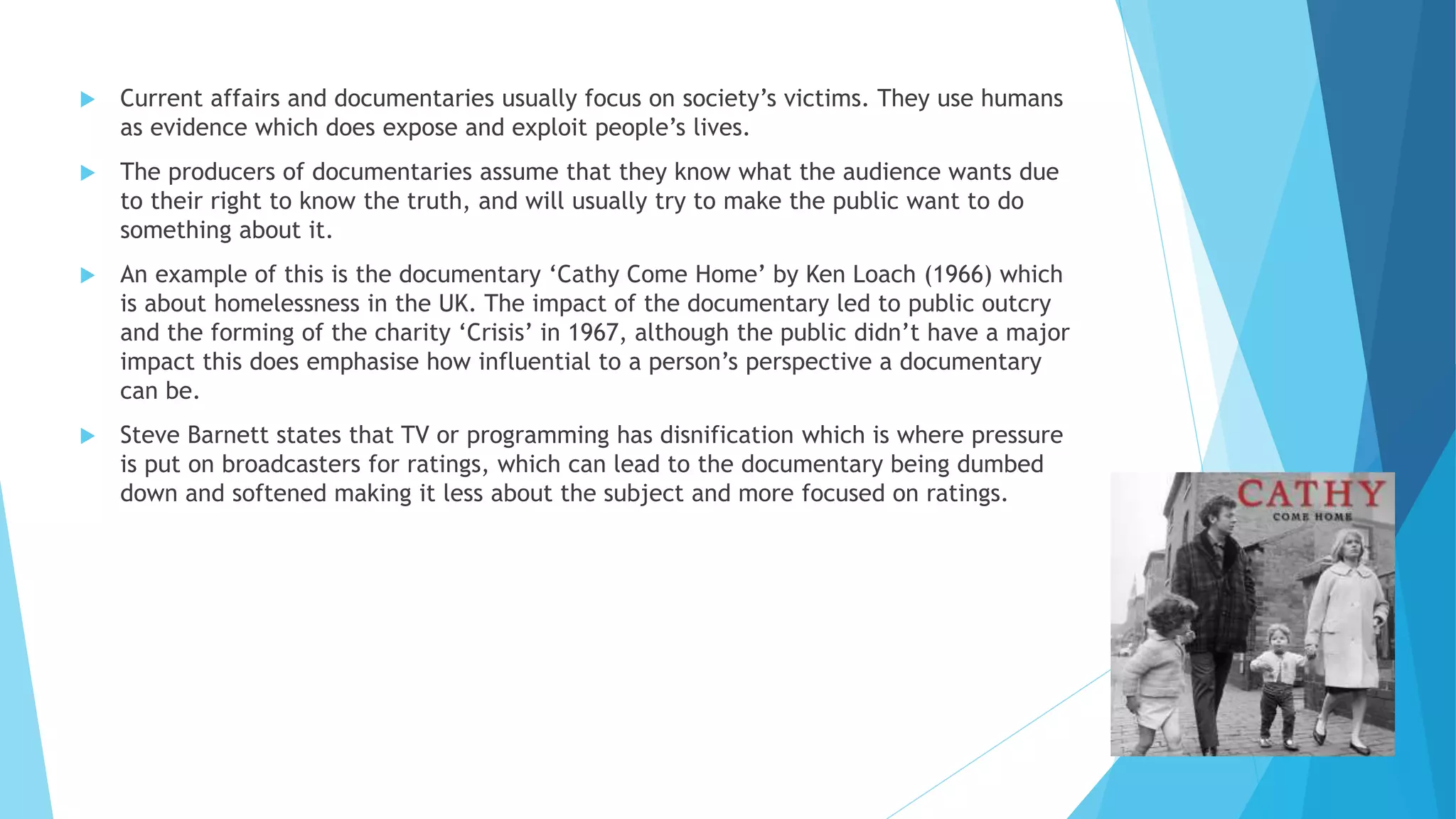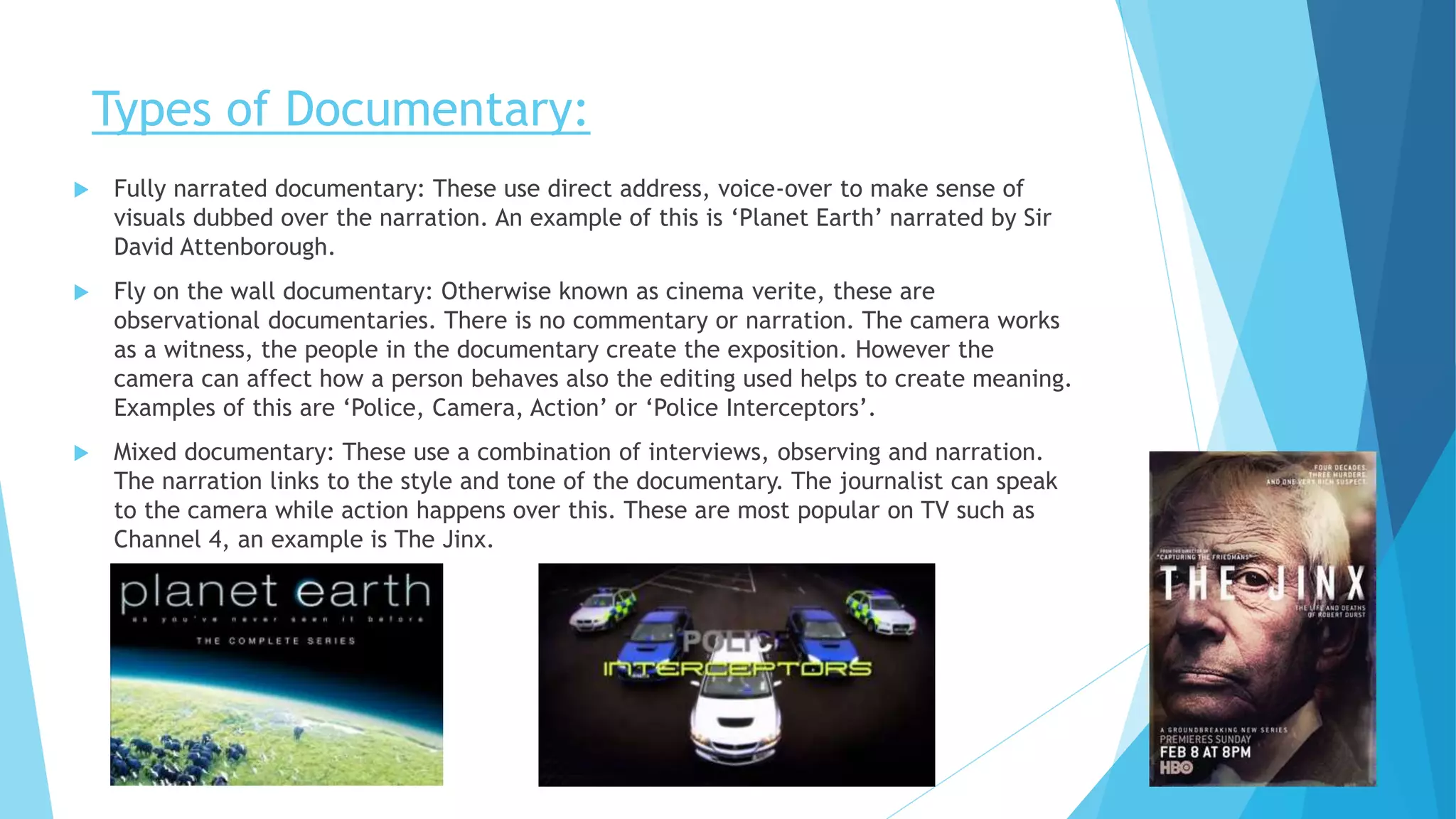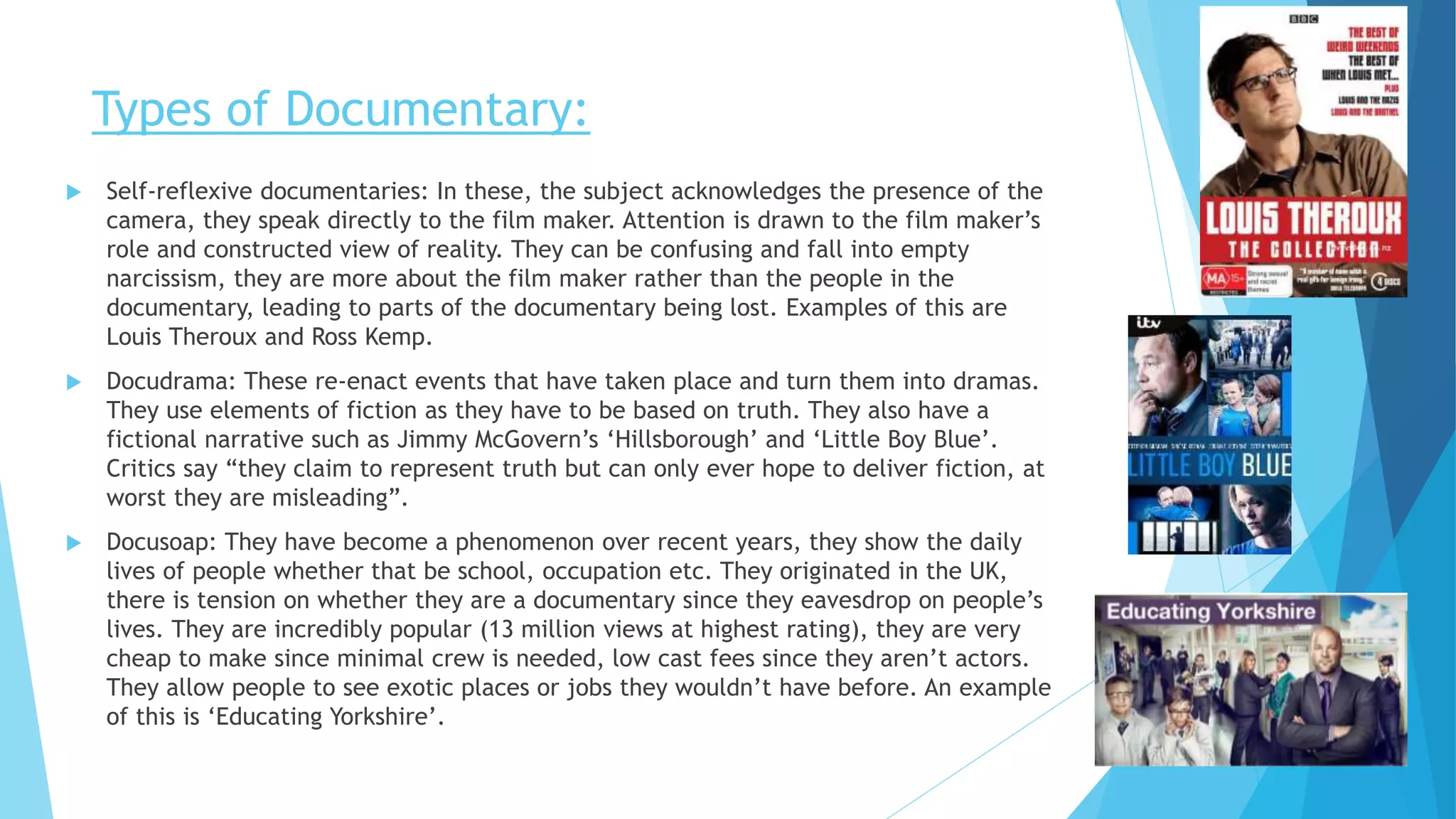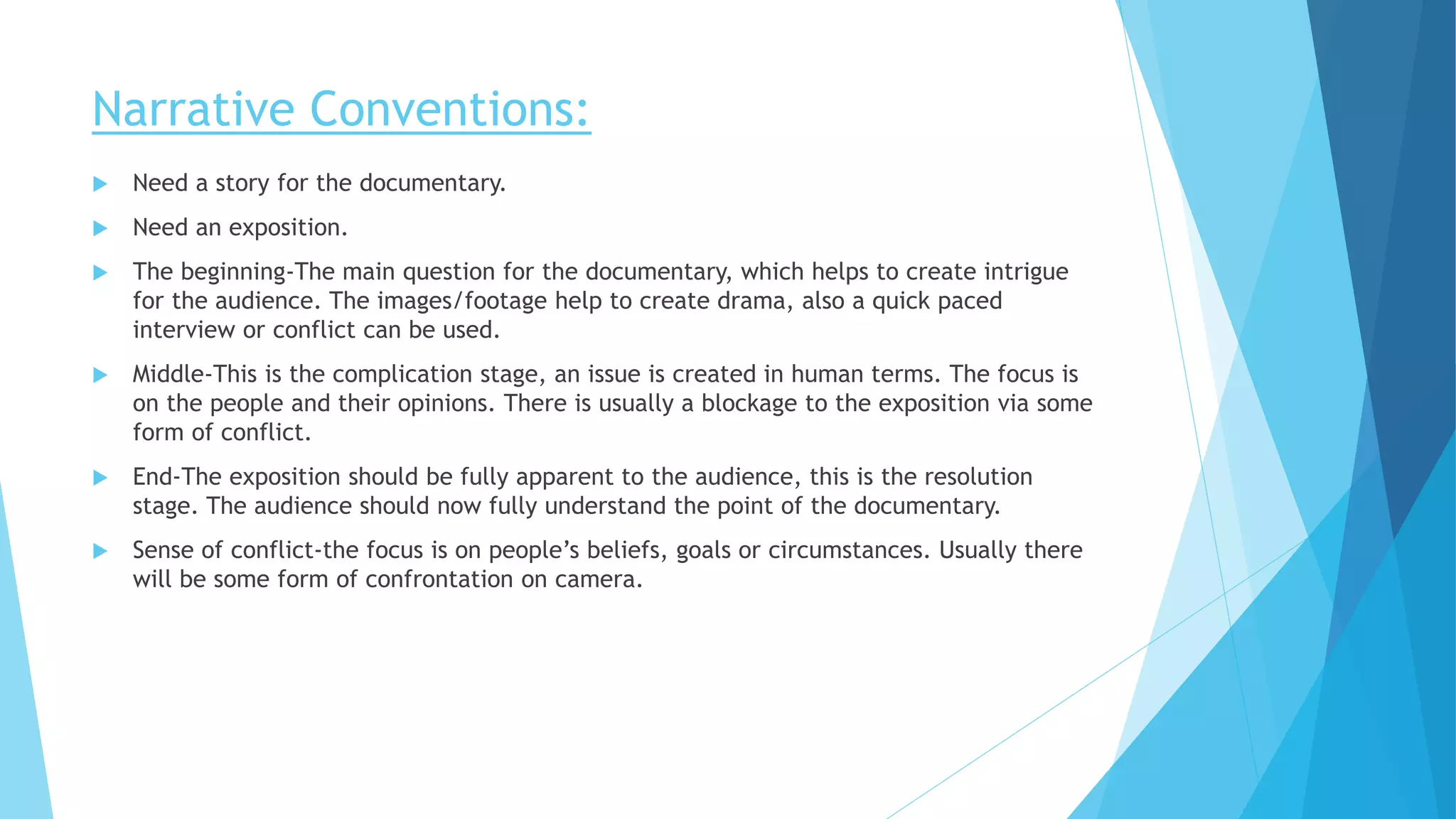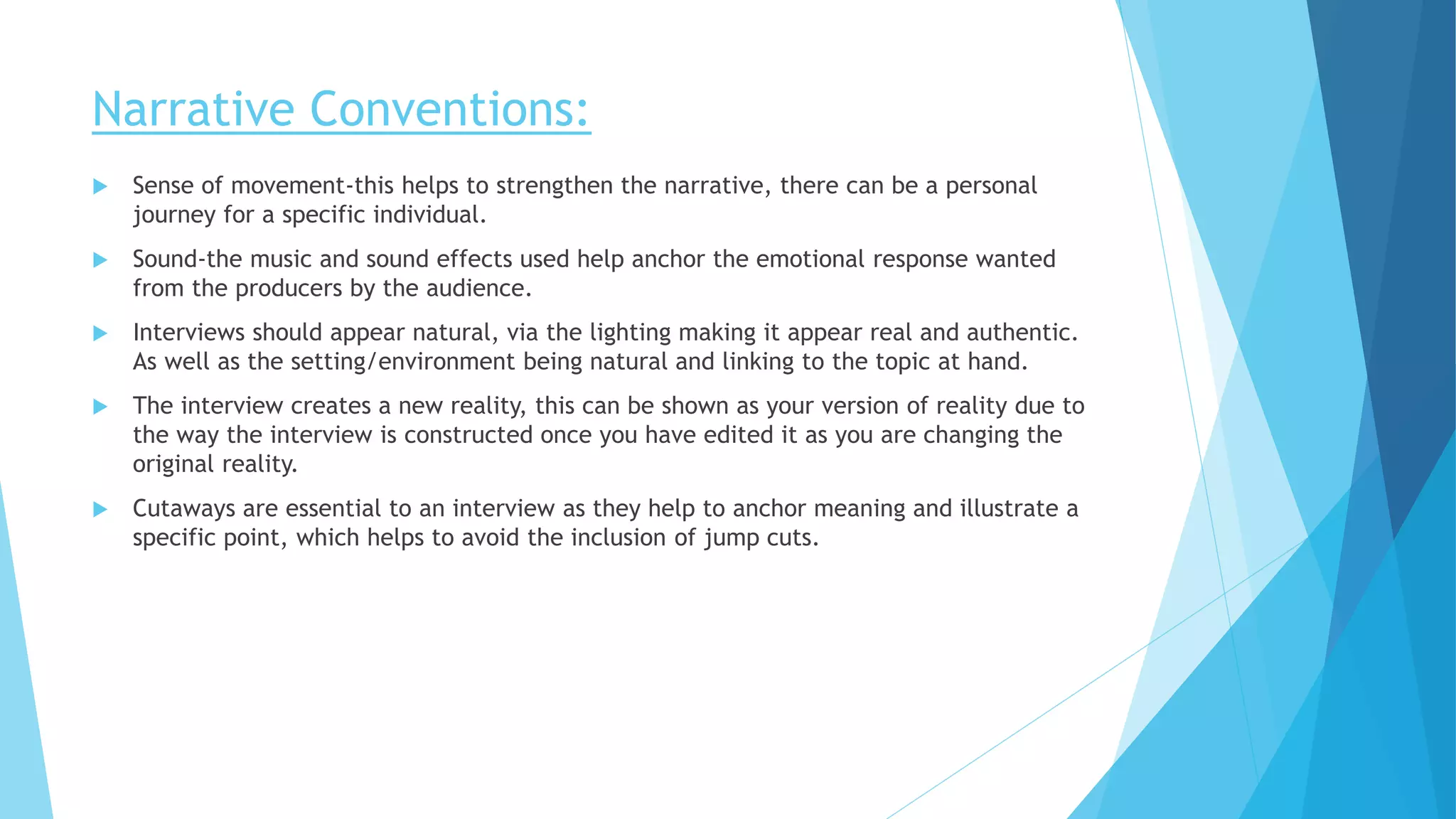The document summarizes the key elements and purposes of documentaries. It discusses that documentaries must be based on facts and use evidence such as footage and interviews to document real events. It also describes different types of documentaries such as fully narrated, observational, mixed, and docudramas. Additionally, it outlines narrative conventions for documentaries including having an exposition, beginning with intrigue, a complication middle, and a resolution ending.
